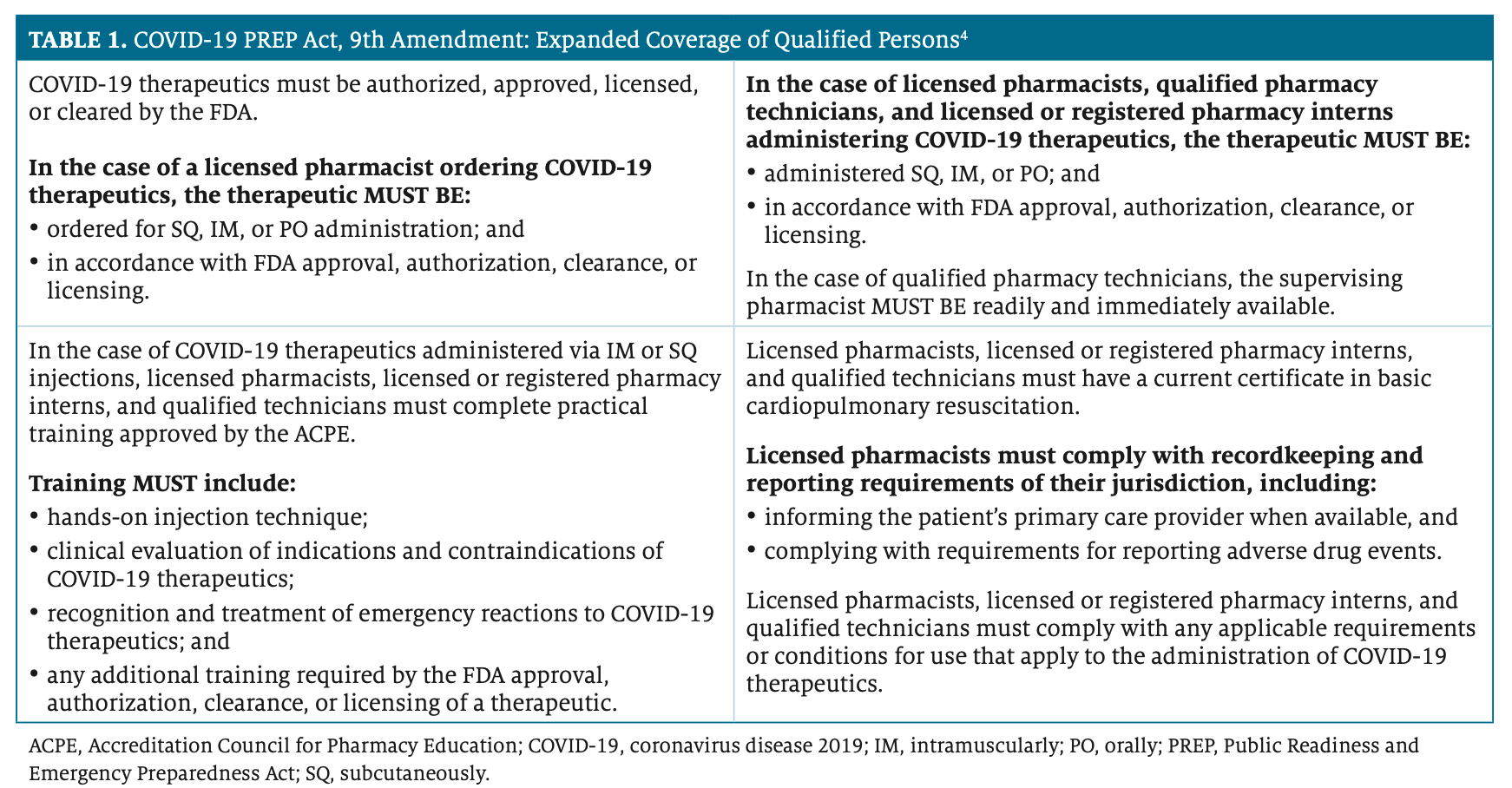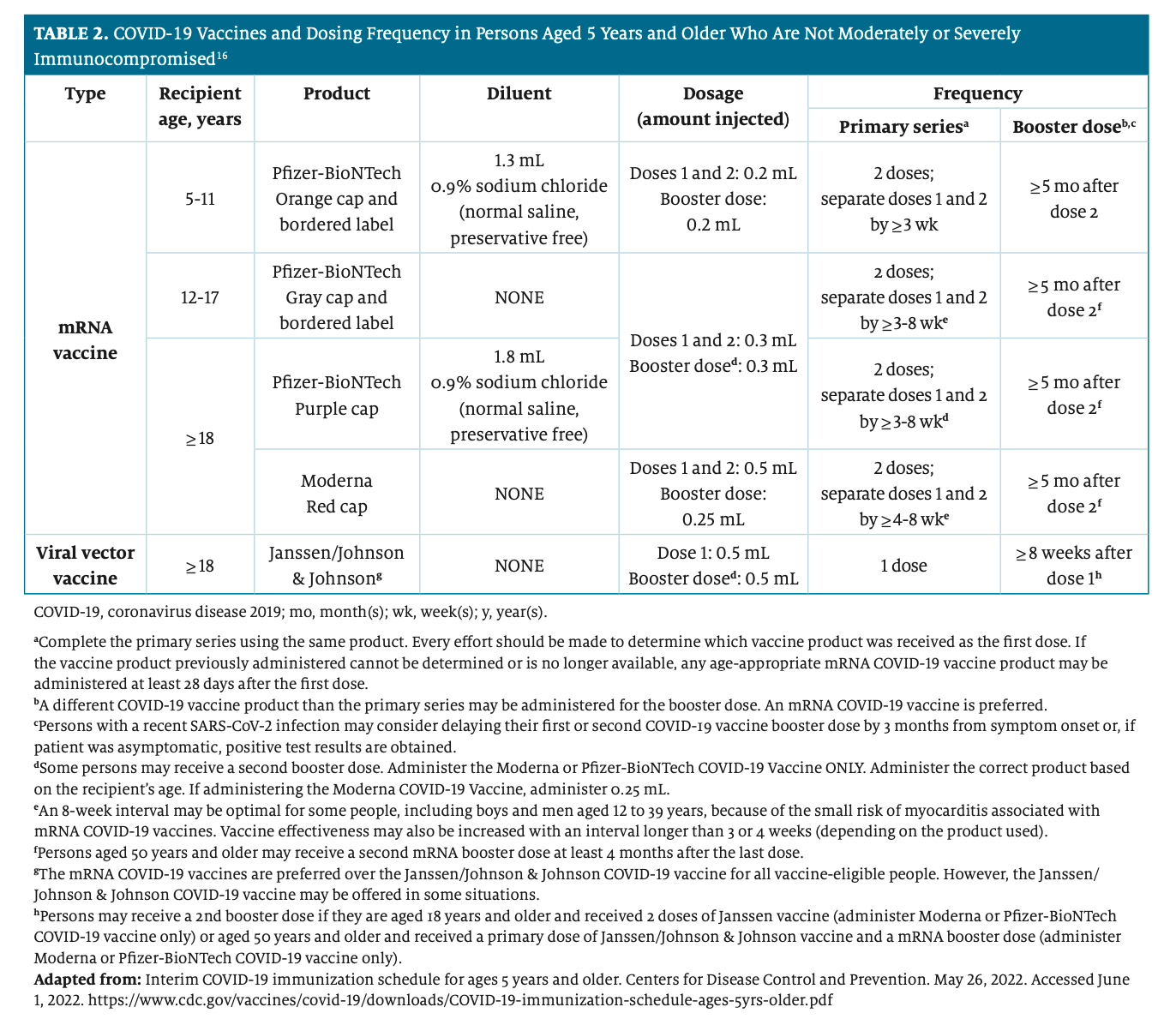News
Article
Supplements
Examining the Partnership Between Pharmacy and Public Health During the COVID-19 Pandemic
Pharmacy and public health have a long history of collaboration during an emergency.
Pharmacy and public health have a long history of collaboration during an emergency. One example involves efforts taken during the H1N1 influenza pandemic, when pharmacy was mobilized to help administer thousands of influenza vaccines across the country as an extension of public health services.1 More recently, the world faced a new pandemic: coronavirus disease 2019 (COVID-19). Pharmacies and pharmacists continue to play a vital role during this pandemic in providing education and clinical services to support public health mitigation strategies. Since the first COVID-19 vaccines were authorized for emergency use in the United States, strategies have evolved to provide COVID-19 vaccinations, booster doses, testing, and treatment. In addition, steps have been taken to ensure that people wear high-quality masks, maintain social distancing, and access good ventilation in indoor spaces.2 This article highlights the myriad of ways that pharmacists have reinforced and bolstered public health policies over the last 2 years to meet the challenges of the COVID-19 pandemic head-on.
Expanding Capabilities Through The PREP Act
As a result of the COVID-19 pandemic, in March 2020, the secretary of the US Department of Health & Human Services (HHS) issued a declaration under the Public Readiness and Emergency Preparedness (PREP) Act. This statement provides liability protection to persons and federal, state, and local governments (including tribes and territories) involved in the development, manufacture, evaluation, distribution, and administration of covered countermeasures to COVID-19, such as therapeutics authorized by the FDA.3,4 Among persons protected under the declaration are pharmacy professionals and other health care workers who administer covered products to counter medical conditions related to COVID-19.3,4 The PREP Act authorizes the secretary of HHS to issue a health declaration when there is a present or credible risk of a future public health emergency. In these cases, health care workers and other parties are protected from liability related to loss that is caused by, related to, or a result of administration or use of antidotes to diseases, threats, and conditions, except when willful conduct can be proven.3 The PREP Act and the declaration preclude state requirements (eg, more limited licensing or scope of practice requirements) that could prevent a qualified person from prescribing, dispensing, or administering vaccines (Table 1).3

Since it was issued, this declaration has been amended several times to expand liability protections, including amendments to cover licensed health care professionals who cross state borders and federal response teams.5 On October 20, 2020, the HHS declared expanded access to childhood vaccines under the PREP Act to decrease the risk of vaccine-preventable disease outbreaks during the COVID-19 pandemic; this action permits licensed pharmacists, qualified pharmacy technicians, and pharmacy interns to administer routine childhood vaccines to children aged 3 to 18 years.6 This includes the age-appropriate provision of COVID-19 vaccines and COVID-19 testing.
Federal Retail Pharmacy Program For COVID-19 Vaccinations
With the PREP Act in place, pharmacists were faced with the unique and daunting task of vaccinating hundreds of millions of people. To streamline this process and provide needed vaccine access to communities across the country, the Biden administration created the Federal Retail Pharmacy Program (FRPP) for COVID-19 Vaccinations in February 2021.7 The FRPP is a collaboration between the federal government, states, and territories and 21 national pharmacy partners and independent pharmacy networks across the country.8 With most Americans living within 5 miles of a pharmacy, the FRPP is built upon the existing strength and expertise of pharmacy partners to rapidly deploy vaccinations to the public.8
As of May 11, 2022, the FRPP reported that more than 248 million doses of the COVID-19 vaccine have been administered.8 This includes 8 million doses administered onsite at long-term–care facilities in the early days of the vaccine rollout. Health care workers at more than 41,000 locations have been administering doses nationwide, and these vaccinations are available free of charge. This is especially important as we receive new and evolving recommendations concerning the need for booster doses, including a second booster dose for certain populations.9 A list of FRPP partners is available at https://www.cdc.gov/vaccines/ covid-19/retail-pharmacy-program/participating-pharmacies.html.
The COVID-19 pandemic also reinforced the importance of vaccine safety. Ensuring that all staff adhere to safety recommendations may increase the likelihood that they remain healthy, present at work, and able to provide much needed services to the community. A list of recommended protective safety measures is available at https://immunize. org/catg.d/p2009.pdf.
Available COVID-19 Vaccines, Boosters, and Guidance
Currently, the only FDA-approved vaccines for COVID-19 are the PfizerBioNTech vaccine (Comirnaty; an mRNA vaccine formulated for individuals aged ≥ 16 years) and the Moderna vaccine (Spikevax; an mRNA vaccine indicated for individuals aged ≥ 18 years).10-12 Other formulations of the Pfizer- BioNTech vaccine (for individuals aged 5-11 years and ≥ 12 years) and the Janssen/Johnson & Johnson vaccine (a viral vector vaccine indicated for individuals aged ≥ 18 years) are authorized for emergency use at the time of this publication.13,14 The recommendations for vaccination include a primary series (2 doses of an mRNA vaccine [preferred] or 1 dose of a viral vector vaccine).15
Booster doses using the mRNA vaccine are recommended to increase or restore protection against COVID-19 that may decline after the primary vaccination series is completed. Everyone aged at least 5 years who has completed their primary vaccination series is eligible for a first booster dose.
A second booster dose is currently recommended no less than 4 months after receiving the first booster dose for adults 50 years and older, some individuals with immunosuppressive conditions, and people who received 2 doses—1 primary dose plus 1 booster dose—of the Janssen/Johnson & Johnson viral vector vaccine. The latest guidance is available on the CDC website: https://www.cdc.gov/coronavirus/2019-ncov/vaccines/booster-shot.html.

Table 2 summarizes COVID-19 vaccine options that are available to individuals aged 5 years and older who are not moderately or severely immunocompromised; it includes recommended frequency of primary and booster doses, published in May 2022.16 Additional information on COVID-19 vaccine eligibility and availability also can be found by visiting https://www.vaccines.gov/(1-800-232- 0233), by texting a zip code to 438829 (GETVAX), or by contacting a state health department website.8
Additional Vaccination Services
There is no doubt that the measures involving pharmacy have had a positive impact on helping to limit the morbidity and mortality related to the COVID-19 pandemic. In addition, increased responsibilities and tasks have led pharmacists to develop new and creative ways to optimize staffing. The roles of student pharmacists, pharmacy interns, and pharmacy technicians have been bolstered to support patient care and safety as COVID-19–related services are delivered. Community outreach and onsite services—which provide vital opportunities to address COVID-19 vaccine misinformation, hesitancy, and trust—could not have been offered without the help of additional pharmacy staff.
Addressing Vaccine Hesitancy
In addition to administering COVID-19 tests and vaccinations, pharmacy staff have had an important role in vaccine education. Patients who may be hesitant to receive a vaccination are more likely to get vaccinated when given incentives, and a trusted relationship with a pharmacist may increase vaccine uptake.17 Ultimately, it is the patient who has the final decision about receiving a vaccination. Through motivational techniques (eg, asking open-ended questions, showing empathy, acknowledging concerns, reframing and reflecting language, providing information, and asking for feedback), pharmacists can provide each patient with the guidance they need to confidently make an informed decision.18 Multiple patient handouts are available on the Immunization Action Coalition website (https://www.immunize.org/handouts/). In addition, the University of California, San Francisco, website offers recommended health coaching techniques regarding COVID-19 at https://cepc.ucsf.edu/health-coaching.
Conclusions
The profession of pharmacy has stepped up to meet the challenges of caring for patients during the COVID-19 pandemic. Pharmacists represent one of the most accessible types of health care providers, and they have played a key role in the administration of COVID-19 vaccines. The positive results of these efforts have proven the effectiveness of a collaboration between pharmacy and public health. It is currently unknown when the COVID-19 emergency declarations will end; however, solidification of the expanded scope of pharmacy professionals remains critical, especially since most Americans now rely on their neighborhood pharmacy for COVID-19 vaccination and related health care needs. Looking forward, when the public health emergency declarations do expire, organizations such as the Centers for Medicare & Medicaid Services should ensure that improved access to quality care and pharmacists is preserved. We must learn from this pandemic so that we are prepared for the next one.
About The Author
Christina M. Madison, PharmD, FCCP, AAHIVP, is the founder and CEO of The Public Health Pharmacist, PLLC, in Las Vegas, Nevada.
References
1. The 2009 H1N1 pandemic: summary highlights, April 2009-April 2010. Centers for Disease Control and Prevention. June 16, 2010. Accessed May 2, 2022. https://www.cdc.gov/h1n1flu/cdcresponse.htm
2. How to protect yourself & others. Centers for Disease Control and Prevention. Updated February 25, 2022. Accessed May 2, 2022. https://www.cdc. gov/coronavirus/2019-ncov/prevent-getting-sick/prevention.html
3. Declaration under the Public Readiness and Emergency Preparedness Act for medical countermeasures against COVID-19. US Department of Health and Human Services. March 17, 2020. Accessed May 2, 2022. https://www. federalregister.gov/documents/2020/03/17/2020-05484/declaration-under-the-public-readiness-and-emergency-preparedness-act-for-medical-countermeasures
4. Ninth amendment to declaration under the Public Readiness and Emergency Preparedness Act for medical countermeasures against COVID-19. Department of Health & Human Services. September 14, 2021. Accessed May 2, 2022. https://www.federalregister.gov/documents/2021/09/14/2021-19790/ninth-amendment-to-declaration-under-the-public-readiness-and-emergency-preparedness-act-for-medical
5. Public Readiness and Emergency Preparedness Act. HHS Office of the Assistant Secretary for Preparedness & Response. US Department of Health and Human Services. Accessed May 2, 2022. https://aspr.hhs.gov/legal/PREPact/Pages/default.aspx
6. PREP Act authorization for pharmacies distributing and administering certain covered countermeasures. US Department of Health & Human Services. October 29, 2020. Accessed May 3, 2022. https://www.hhs.gov/ guidance/sites/default/files/hhs-guidance-documents//prep-act-authorization-pharmacies-administering-covered-countermeasures.pdf
7. Fact sheet: President Biden announces increased vaccine supply,
initial launch of the Federal Retail Pharmacy Program, and expansion
of FEMA reimbursement to states. The White House. February 2, 2021. Accessed May 4, 2022. https://www.whitehouse.gov/briefing-room/ statements-releases/2021/02/02/fact-sheet-president-biden-announces- increased-vaccine-supply-initial-launch-of-the-federal-retail-pharmacy- program-and-expansion-of-fema-reimbursement-to-states/
8. The Federal Retail Pharmacy Program for COVID-19 vaccination. Centers for Disease Control and Prevention. Reviewed May 17, 2022. Accessed May 18, 2022. https://www.cdc.gov/vaccines/covid-19/retail-pharmacy-program/ index.html
9. COVID-19 vaccine boosters. Centers for Disease Control and Prevention. Updated May 24, 2022. Accessed June 1, 2022. https://www.cdc.gov/coronavirus/2019-ncov/vaccines/booster-shot.html
10. Learn more about COVID-19 vaccines from the FDA. US Food and Drug Administration. February 8, 2022. Accessed May 18, 2022. https://www.fda. gov/consumers/consumer-updates/learn-more-about-covid-19- vaccines-fda
11. Comirnaty. US Food and Drug Administration. December 16, 2021. Accessed May 9, 2022. https://www.fda.gov/vaccines-blood-biologics/comirnaty
12. Spikevax. Prescribing information. Moderna; 2022. Accessed May 10, 2022. https://assets.ctfassets.net/qjie68e5s6cv/5z3Eh7GEIURixd7wmKA3RW/ 3b781794281d5ab4893a20077c47f5bf/Spikevax-PI-Final_1.31.22.pdf
13. Cominarty and Pfizer-BioNTech COVID-19 vaccine. US Food and Drug Administration. May 17, 2022. Accessed May 18, 2022. https://www.fda.gov/emergency-preparedness-and-response/coronavirus-disease-2019-covid-19/comirnaty-and-pfizer-biontech-covid-19-vaccine# additional
14. Janssen COVID-19 vaccine. US Food and Drug Administration. May 5, 2022. Accessed May 18, 2022. https://www.fda.gov/emergency-preparedness-and-response/coronavirus-disease-2019-covid-19/janssen-covid-19-vaccine
15. Interim clinical considerations for use of COVID-19 vaccines currently approved or authorized in the United States. Centers for Disease Control and Prevention. April 21, 2022. Accessed May 18, 2022. https://www.cdc.gov/vaccines/covid-19/clinical-considerations/interim-considerations-us.html#recommendations
16. Interim COVID-19 Immunization Schedule for Ages 5 Years and Older. May 26, 2022. Accessed June 1, 2022. https://www.cdc.gov/vaccines/covid-19/downloads/COVID-19-immunization-schedule-ages-5yrs-older.pdf
17. Fact sheet: President Biden to announce new actions to get more Americans vaccinated and slow the spread of the delta variant. White House. July 29, 2021. Accessed May 5, 2022. https://www.whitehouse.gov/ briefing-room/statements-releases/2021/07/29/fact-sheet-president-biden-to-announce-new-actions-to-get-more-americans-vaccinated-and-slow-the-spread-of-the-delta-variant/
18. COVID-19 Virtual Training Academy: summary of interview techniques. University of California, San Francisco. Accessed May 5, 2022. https://cepc.ucsf.edu/sites/cepc.ucsf.edu/files/D3_SL_CT_08-31-2020_CT-CI%20 tools%20cheat%20sheet_0.pdf

Newsletter
Stay informed on drug updates, treatment guidelines, and pharmacy practice trends—subscribe to Pharmacy Times for weekly clinical insights.






